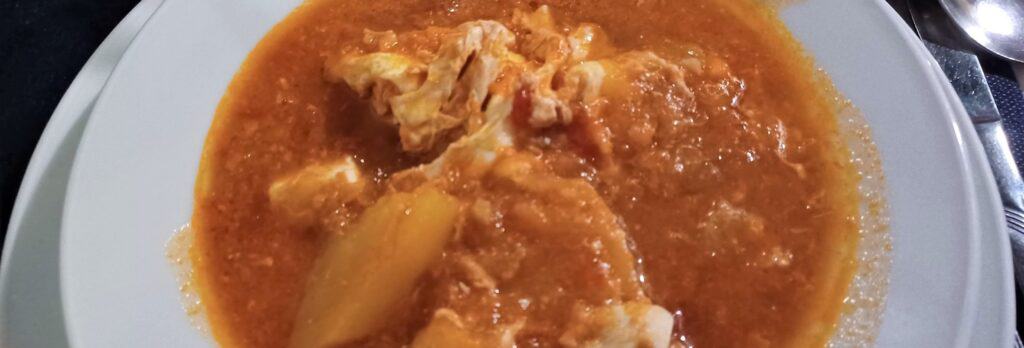Pão Alentejano, the sourdough bread made in the Alentejo region of Portugal is known for it crunchy crust and distinctive bump on the top of the loaf.
Alentejo is a large region in central Portugal, but it’s not very popular with tourists. It is known for it’s wheat production as well as vineyards and wineries.
Pão Alentejano
In Alentejo, bread is traditionally made with wheat flour and without the durum flour so common in Portuguese breads. The crumb is rather dense and the crust is thick and crunchy. Pão Alentejano is called “pão de testa” because before it is baked it is folded resulting in the bump or head on top of the loaf.
Pão Alentejano was always cooked in a wood burning oven, but today, large commercial bakeries crank out bread in Alentejo, just like all over the world, with little thought to traditional ingredients or baking methods. So, the bread you get in the supermarket isn’t likely to be very good. However, local bakeries still make excellent Pão Alentejano.
The bread is also an important ingredient in several other dishes like Açorda and Sopa de Tomate Alentejana.

Açorda
Açorda is a soup that makes use of leftover Pão Alentejano.
A paste of garlic and cilantro (sometimes other ingredients like peppers) is spooned into a soup bowl. Then, eggs are poached in boiling water. Once cooked, the eggs are removed and the boiling water is added to the garlic/cilantro paste. Stale Pão Alentejano is added and allowed to soak up the garlicky broth. Finally, the Açorda is topped with the poached eggs and served.
Traditionally, Açorda was called “beggar’s soup” because it was made of leftover Pão Alentejano and no meat. However, in recent times, a chicken or beef stock is sometimes used instead of water so vegetarians should make sure the Açorda being served doesn’t have any meat in it.
Sopa de Tomate Alentejana

Portugal spent a lot of time fighting wars with their neighbor Spain. In 1665, the Portuguese, with some help from their friends the British, won the Battle of Montes Claros and captured many Spanish soldiers. These prisoners were held in Alentejo and fed a dish from the region, Sopa de Tomate. Legend has it that when the prisoners were freed they returned home and tried to replicate the dish. This eventually became Salmorejo, a dish closely associated with Cordoba, Spain.
The original Portuguese soup, Sopa de Tomate Alentejana, is made with a base of tomatoes, garlic, and onions. While there’s nothing unique about that, what’s added next makes the soup special. An egg is gently slid into the soup where it is poached in the tomato broth.
Sopa de Tomate Alentejana is served by ladling the soup over some Pão Alentejano. Normally, it is topped with Chouriço. Vegetarians can request the Chouriço be omitted, however, be aware that sometimes the base of the soup is made with the rendered fat of the Chouriço. Ask before ordering. Also, vegans can be accommodated by requesting the egg be omitted.
Variations on Sopa de Tomate Alentejana include adding potato or green pepper. Sometimes the soup is served with grilled figs on the side to cut through the acidity of the tomatoes.
About the Author

Brent Petersen is the Editor-in-Chief of Destination Eat Drink. He currently resides in Setubal, Portugal. Brent has written the novel “Truffle Hunt” (Eckhartz Press) and the short story collection “That Bird.” He’s also written dozens of foodie travel guides to cities around the world on Destination Eat Drink, including in-depth eating and drinking guides to Lisbon, Porto, Sintra, Monsaraz, and Batalha . Brent’s podcast, also called Destination Eat Drink, is available on all major podcasting platforms and is distributed by the Radio Misfits Podcast Network.
